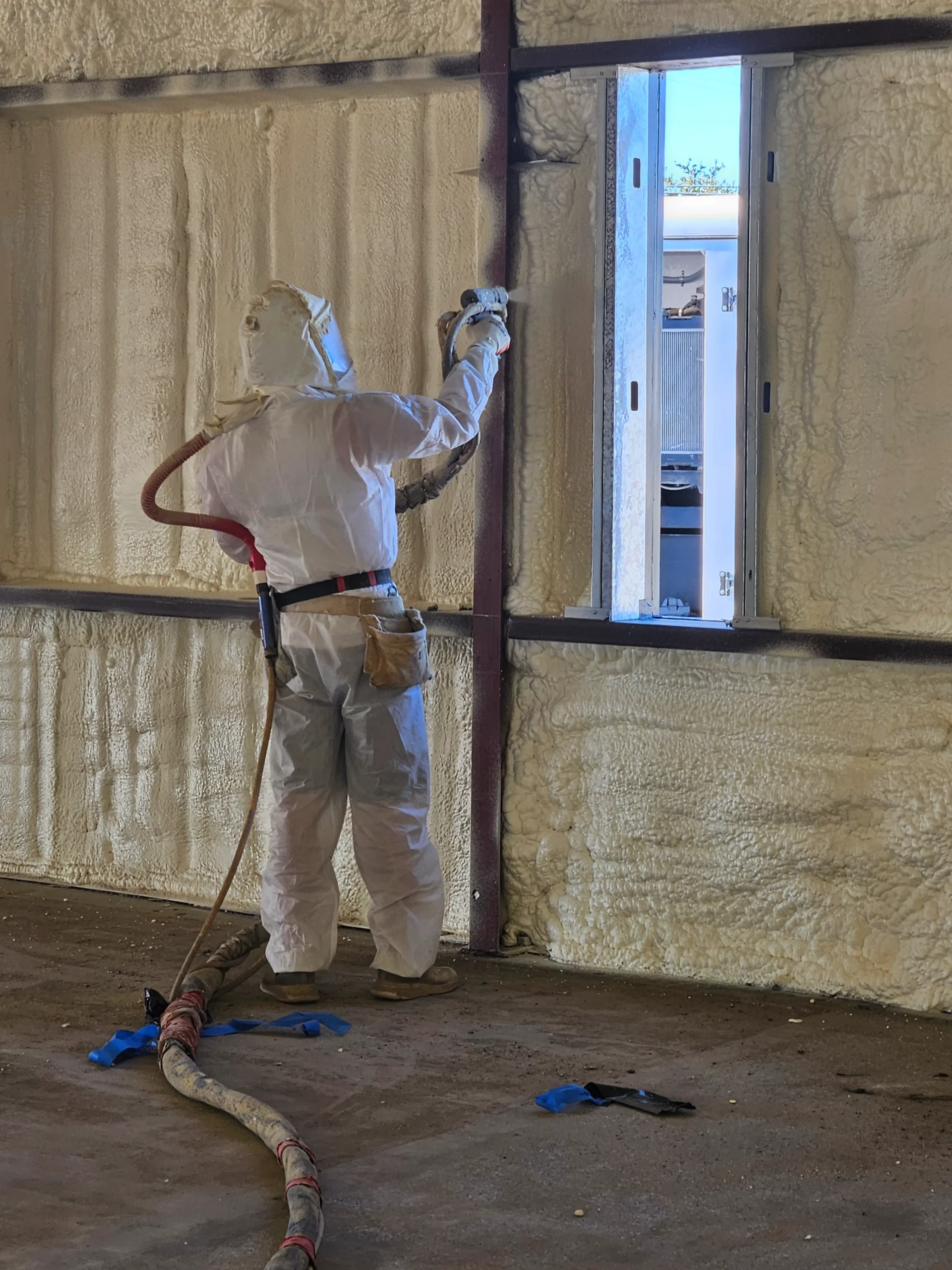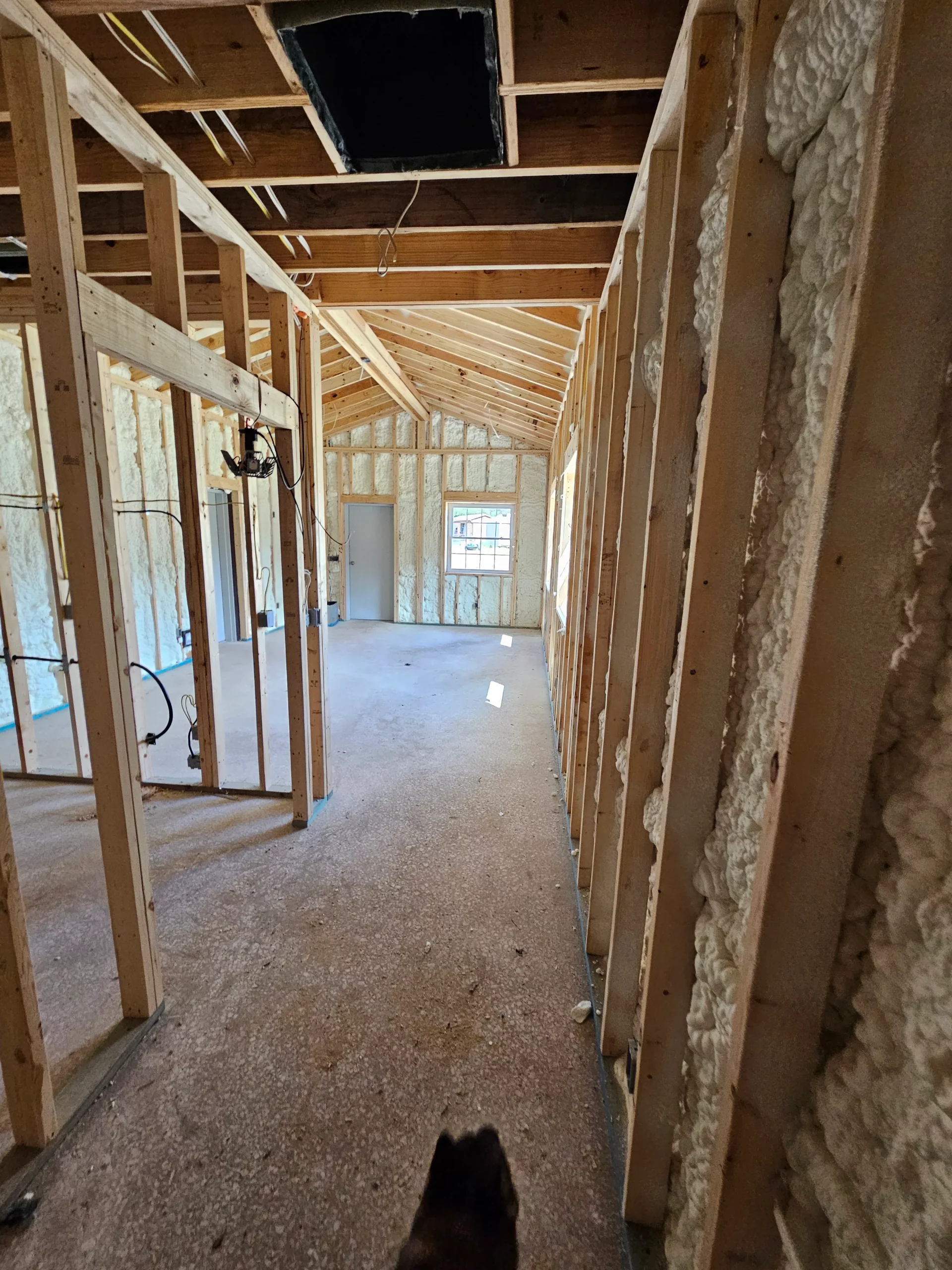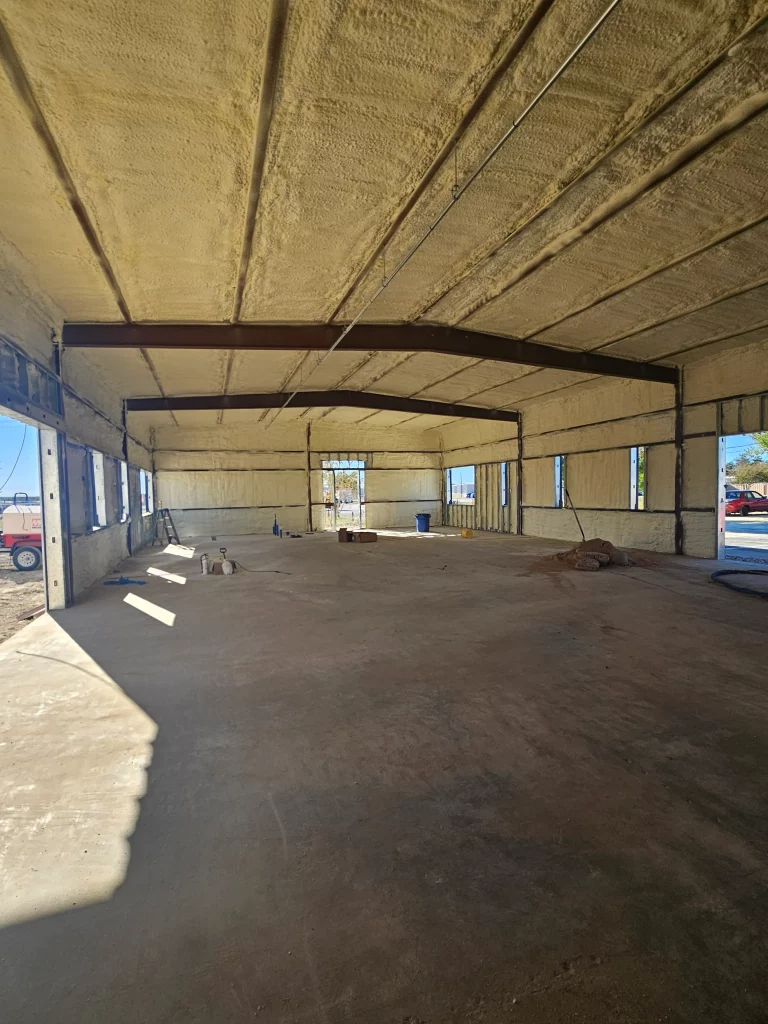

Spray foam insulation represents the optimal solution for Copperas Cove homes due to the region’s demanding climate conditions. With summer temperatures regularly exceeding 96°F and humidity levels reaching 98%, traditional insulation materials fail to provide adequate thermal protection and moisture control. Spray foam creates an airtight seal that prevents hot, humid air infiltration while maintaining consistent indoor temperatures year-round.
Copperas Cove’s hot and muggy summers combined with high humidity create specific challenges for home insulation systems. The superior air sealing capabilities and moisture resistance of spray foam directly address these climate-specific demands, delivering 30-50% energy savings compared to conventional insulation materials. This comprehensive analysis provides practical insights based on extensive installation experience in Central Texas climates.
Central Texas climate zones, including Copperas Cove, present unique insulation challenges that traditional materials cannot effectively address. The combination of extreme heat and persistent humidity creates conditions where conventional fiberglass and cellulose insulation lose effectiveness and allow significant energy loss.
Spray foam insulation excels in these conditions through its closed-cell structure that creates an impermeable barrier against moisture infiltration. Unlike traditional materials that can absorb moisture and lose R-value, spray foam maintains consistent thermal performance regardless of humidity levels. The material’s expansion properties allow it to fill every gap and void, eliminating thermal bridging that commonly occurs in wood-framed construction.
Bonus Tip: During Copperas Cove’s peak summer months when attic temperatures can exceed 140°F, spray foam applied to roof decking brings attic temperatures within 10-15 degrees of living space temperatures, dramatically reducing HVAC workload.
The superior R-value per inch of spray foam provides maximum thermal resistance in minimal space. Closed-cell spray foam delivers R-6.5 to R-7 per inch compared to R-3.2 for fiberglass batts. This increased thermal resistance translates directly to reduced heat transfer from the scorching Texas sun through roof assemblies and exterior walls.
Market research from the Spray Polyurethane Foam Alliance demonstrates that properly installed spray foam insulation generates 30-50% energy savings in residential applications. For Copperas Cove homeowners facing increasing utility costs, these savings compound significantly over time.
| Insulation Type | R-Value per Inch | Air Sealing Capability | Moisture Resistance | Average Energy Savings |
|---|---|---|---|---|
| Spray Foam (Closed-Cell) | R-6.5 to R-7 | Excellent | Superior | 30-50% |
| Spray Foam (Open-Cell) | R-3.5 to R-3.8 | Good | Moderate | 20-35% |
| Fiberglass Batts | R-3.2 to R-3.8 | Poor | Poor | 10-20% |
| Blown-In Cellulose | R-3.2 to R-3.8 | Fair | Poor | 15-25% |
The National Institute of Building Sciences reports that every dollar invested in energy-efficient building improvements yields up to four dollars in reduced energy costs over the building’s lifetime. This return on investment proves particularly significant in Copperas Cove’s climate where cooling costs represent the largest portion of annual energy expenses.
Professional installation requires specific technical considerations for optimal performance in Copperas Cove’s climate conditions. The application process must account for high ambient temperatures and humidity levels that affect curing times and final density.
| Application Area | Recommended Type | Thickness | Expected R-Value | Special Considerations |
|---|---|---|---|---|
| Attic Roof Deck | Closed-Cell | 3-4 inches | R-20 to R-28 | Vapor barrier properties |
| Exterior Walls | Closed-Cell | 2-3 inches | R-13 to R-21 | Thermal bridging prevention |
| Crawl Spaces | Closed-Cell | 2-3 inches | R-13 to R-21 | Moisture control critical |
| Basement Walls | Closed-Cell | 2-3 inches | R-13 to R-21 | Below-grade applications |

Temperature fluctuations between 40°F winter lows and 96°F+ summer highs create expansion and contraction stresses that spray foam accommodates better than rigid insulation materials. The flexible nature of cured spray foam prevents cracking and separation that commonly affects other insulation types in extreme temperature cycles.
Bonus Tip: Installation timing matters in Copperas Cove’s climate. Schedule spray foam applications during moderate temperature periods (70-85°F) for optimal curing and density achievement.
Copperas Cove experiences approximately 180-200 days annually with temperatures above 80°F, creating extended cooling seasons that strain conventional insulation systems. The region’s hot-humid climate classification requires insulation materials that maintain performance under persistent moisture exposure.
According to recent climate data, Copperas Cove averages humidity levels between 70-88% during peak summer months. Traditional insulation materials absorb this moisture, reducing thermal performance and creating conditions conducive to mold growth. Spray foam’s closed-cell structure prevents moisture absorption while providing continuous air sealing.
The region’s frequent thunderstorms and temperature swings demand insulation that maintains integrity during rapid weather changes. Spray foam adheres directly to substrate materials, preventing settling and gap formation that commonly affects loose-fill insulation during high wind events.
Air infiltration represents approximately 40% of total energy loss in residential buildings according to the U.S. Department of Energy. In Copperas Cove’s humid climate, uncontrolled air exchange introduces moisture-laden outdoor air that increases cooling loads and creates comfort issues.
Spray foam creates a continuous air barrier that effectively eliminates infiltration pathways common in traditional construction methods. Unlike batt insulation that relies on separate vapor barriers and caulking, spray foam provides integrated air sealing and insulation in a single application.
The material’s expansion properties ensure complete fill of irregular cavities, electrical penetrations, and structural irregularities that typically compromise air sealing effectiveness. This comprehensive sealing approach prevents the stack effect that drives hot, humid air through building assemblies during Copperas Cove’s intense summer conditions.
Several critical factors require evaluation before selecting spray foam insulation for Copperas Cove homes. These considerations directly impact performance, cost-effectiveness, and long-term satisfaction with the investment.
Professional installation remains essential for achieving specified performance levels. Improper mixing ratios, application thickness variations, or inadequate surface preparation can compromise thermal performance and create costly remediation requirements. Certified installers possess the specialized equipment and training necessary for consistent results.
Building code compliance varies by jurisdiction and application. Verify local requirements for fire ratings, vapor barrier properties, and ventilation modifications before installation. Some installations may require thermal barriers or ignition barriers depending on exposure conditions.
Existing HVAC system capacity requires evaluation when implementing spray foam insulation. The dramatic reduction in heating and cooling loads may allow for smaller, more efficient equipment selection in new construction or major renovations. Existing systems may operate more efficiently but could be oversized for the reduced loads.
Cost considerations extend beyond initial installation expenses. While spray foam requires higher upfront investment compared to traditional materials, the long-term energy savings and durability benefits provide favorable return on investment. Factor maintenance costs, expected lifespan, and potential utility rebates into the financial analysis.
Spray Foam Tech provides comprehensive insulation solutions specifically designed for Central Texas climate conditions. The company’s expertise in hot-humid climate applications ensures proper material selection and installation techniques for maximum performance and longevity.
Bonus Tip: Combining spray foam insulation with radiant barrier technology in attic applications provides additional heat reflection benefits, further reducing cooling loads during Copperas Cove’s intense summer months.
Spray foam insulation represents a significant upgrade over traditional insulation materials for Copperas Cove homes. The combination of superior thermal performance, comprehensive air sealing, and moisture resistance directly addresses the challenges posed by Central Texas climate conditions.
The investment in spray foam insulation provides immediate comfort improvements and long-term energy savings that compound over decades of ownership. Market research indicates growing homeowner awareness of spray foam benefits, with 72% of homeowners now familiar with the technology and 43% expressing interest in implementation.
Consider your specific home conditions, energy usage patterns, and long-term ownership plans when evaluating insulation options. Professional assessment can identify areas where spray foam provides maximum benefit and determine the most cost-effective application approach for your situation.
Professional insulation assessment ensures optimal material selection and application techniques for Copperas Cove’s specific climate challenges. Spray Foam Tech combines extensive local experience with proven installation methods to deliver superior results for residential and commercial applications.
The company’s certified installers understand the technical requirements for achieving maximum performance in hot-humid climate conditions. From initial evaluation through final inspection, Spray Foam Tech provides comprehensive service focused on long-term customer satisfaction and energy savings.
Contact Spray Foam Tech today for professional consultation and customized insulation solutions. Call (737) 777-9590 or email oldworldtx@hotmail.com to schedule your comprehensive home energy assessment and discover how spray foam insulation can transform your Copperas Cove home’s comfort and efficiency.
Installation timeframes depend on project scope and home size. A complete attic application typically requires 4-6 hours, while whole-house insulation may take 1-2 days. Weather conditions can affect scheduling, as extreme temperatures impact application parameters.
Closed-cell spray foam provides excellent moisture resistance and can help reduce humidity infiltration. However, existing moisture problems require resolution before installation. Proper building envelope design and mechanical ventilation remain important for comprehensive moisture management.
Application over existing insulation depends on specific conditions and materials. Wet or damaged insulation requires removal before spray foam application. Dry, intact insulation may be compatible but can reduce final R-value effectiveness due to thermal bridging through the existing material.
Quality spray foam maintains thermal performance across the full temperature range experienced in Central Texas. The material’s flexibility accommodates expansion and contraction without cracking or separation that affects other insulation types.
Energy savings typically range from 30-50% according to Spray Polyurethane Foam Alliance data. Actual savings depend on home construction, existing insulation levels, and HVAC efficiency. Most homeowners see significant utility bill reductions within the first month of installation.
Properly installed spray foam insulation maintains performance for 50+ years without settling or degradation. The material’s chemical stability and adhesion properties ensure long-term effectiveness despite temperature cycling and humidity exposure common in Central Texas.
Spray foam requires minimal maintenance once properly installed. Annual visual inspections can identify any damage from pest activity or mechanical systems. The material does not settle, shift, or degrade under normal conditions, eliminating the need for periodic replacement.
Spray foam provides excellent sound dampening properties, particularly open-cell formulations. The material’s density and air sealing capabilities reduce both airborne and impact noise transmission. Many homeowners notice significant noise reduction from outdoor sources and between interior spaces.
Professional installation includes temporary ventilation and occupant evacuation during application and initial curing periods. Once fully cured, spray foam poses no ongoing health risks. Quality installations include proper application techniques and appropriate safety barriers where required by code.


